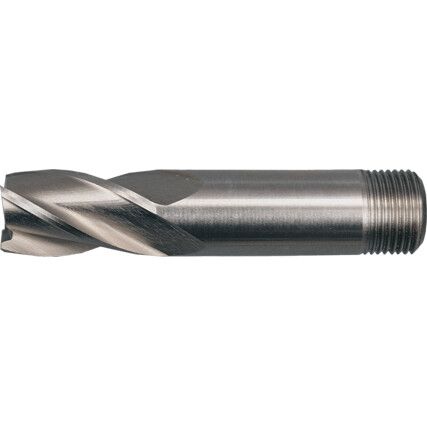End Mills Short
Short end mills provide an affordable alternative to standard length cobalt and carbide end mills that don't sacrifice on performance. We offer short end mills in a diverse range of diameters, materials, and finishes.
Cromwell stocks a wide range of quality short end mills, from trusted brands used by industry professionals around the globe.
What are short end mills?
End mills are fairly similar to drill bits in design, but not in functionality. Drill bits are designed to create uniform holes, plunging directly into the material or workpiece. End mills can perform a far wider range of tasks, and are able to create slots, profiles, or lateral cuts into material.
Short end mills are the functionally the same as regular end mills, but sacrifice length and depth of cut for increased affordability.
Why a short end mill?
End mills are widely utilised by professionals to achieve optimal results during the manufacturing process. End milling is one of the most important operations undertaken throughout industrial machining and can only be achieved via the use of proper, quality end mills.
Unlike drill bits and other cutters, short end mills utilise the teeth on the sides and end of the mill, providing unparalleled versatility and precision throughout a number of tasks.
When are short end mills used?
Despite being shorter in length than regular end mills, short end mills are still widely used throughout milling applications. This includes:
• Profile milling
• Face milling
• Tracer milling
• Contouring
• Plunging
• Slotting
• Reaming
• Drilling
If you're looking for the ideal type of short end mill for your job but aren't sure about the best one for your needs, feel free to ask our experts for specialised advice.
Types of short end mill
Short end mills come in a number of configurations, with each type suited to different tasks.
Here are a few of the most common types of end mill, along with their uses:
• Ball nose end mills - Ball nose short end mills feature a wide radius at the bottom, offering a brilliant finish to any workpiece. They are mostly used for cutting deep slots and ribs in moulds and can also be used for deep corner machining. Ball nose end mills are renowned for their accuracy.
• Roughing end mills - Roughing short end mills use rough teeth to quickly remove a large amount of stock. These heavy-duty short end mills are best used for large surface area work, providing a rough finish.
• Fish tail router end mills - Fish tail short end mills are used to avoid splintering in the workpiece and will produce a flat surface. They are typically used for plunge routing or producing precise contours.
Considerations when choosing a short end mill
• Material - When choosing a short end mill, there are a few different materials to consider. The most common choices are HSS (high speed steel), carbide and cobalt.
High speed steel bits are the cheapest and most commonly available type of end mill, however they cut the slowest.
Cobalt end mills are more expensive however they provide greater durability and faster cutting.
Carbide end mills are considered the most professional type, providing best-in-class durability, speed, and heat resistance. They can be used on very hard materials, such as cast iron and certain alloys.
• Coatings - Most short end mills come with coatings, which improve the overall usability of the end mill. Whilst not strictly necessary, coatings like titanium diboride and aluminium nitride help reduce the friction and wear imposed upon your end mill.
Short end mill cutter jargon buster
Short end mill speed calculations:
RPM: 3.82 x SFM ÷ endmill diameter
IPM: RPM x flute number x chip load
Chip load: IPM ÷ RPM x flute number
SFM: endmill diameter x RPM ÷ 3.82
FAQs
How to sharpen a short end mill?
Short end mills can be sharpened with a surface grinder.

